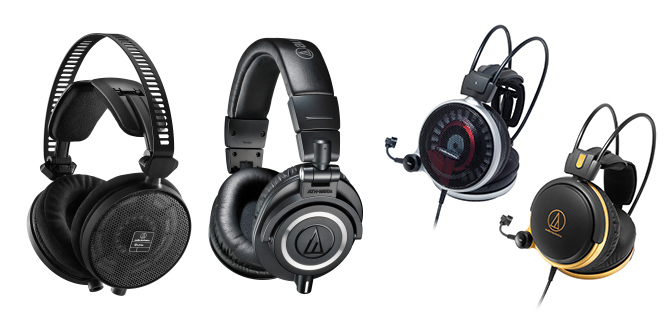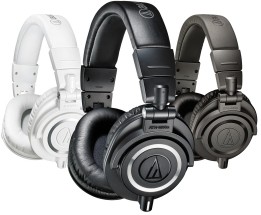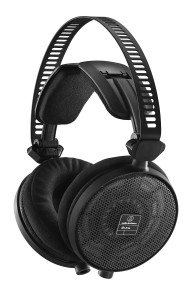
Answer: There are two primary types of over-ear headphones: open-back and closed-back. There is also a third type, semi-open, which attempts to combine the advantages of each. But for this discussion, we will focus on the open-back and closed-back types.
Closed-Back Headphones
Closed-back models are very common and are suitable for almost any situation. Some particular advantages of closed-back models are as follows:
- Good to excellent isolation. A closed-back design reduces or eliminates outside noise from reaching the user. The result is a quiet listening environment that allows the user to hear even very low-level details in the source material. Many studio monitor headphones, which are required to have a high degree of accuracy, are closed-back types. An example of such a headphone is our popular ATH-M50x.
- Low leakage. Leakage is a term used to describe of the extent to which audio leaks from the headphones. Low leakage is important in situations like recording where the leakage of a signal from a wearer’s headphones could be picked up by the recording microphones. Low leakage would also be important if you are concerned about disturbing others around you.
- Enhanced low-frequency (bass) reproduction. Much like the cabinet for a loudspeaker, the enclosed earcup of a closed-back headphone can be tuned to provide a specific result. The properties of a driver combined with the air volume of the cup can work together, for example, to extend low-frequency response or boost a particular range of frequencies. An example of this is our Solid Bass® line of headphones, which use a Double Air Chamber System and sophisticated drivers to provide high-quality, low-frequency reproduction.
Open-Back Headphones
Open-back models are becoming more popular as they can provide a more natural sound with increased soundstage width and depth. This benefit can be fully realized when listening to recordings of large ensembles, such as a choir, theatrical group or orchestra. Many video gamers prefer open-back type headsets for the same reasons. Some particular advantages of open-back models are as follows:
- The open-back architecture of the earcup promotes a more natural sound due to less coloration than an enclosed earcup can create. This is largely due to the minimization of standing waves and reflections.
- Better transient response (how quickly a driver can react to changes in the source material). Due to less air pressure against the rear of the driver, the driver can react more quickly to changes in the signal. This improves accuracy and insures that even the finest low-level sounds are heard clearly.
- Lighter weight. Less earcup material translates to an overall lighter weight assembly. This can be beneficial when the user is wearing headphones for long periods of time, such as when mastering or gaming. A good example of a mastering headphone is our TEC Award-winning ATH-R70x. Check out our lightweight ATH-PDG1 Premium Gaming Headset for those marathon gaming sessions.
We hope this cleared up the differences between open-back and closed-back headphones. But, as always, if you have additional questions or need assistance with A-T products, please contact our Audio Solutions Department.
















































































































































.webp)































